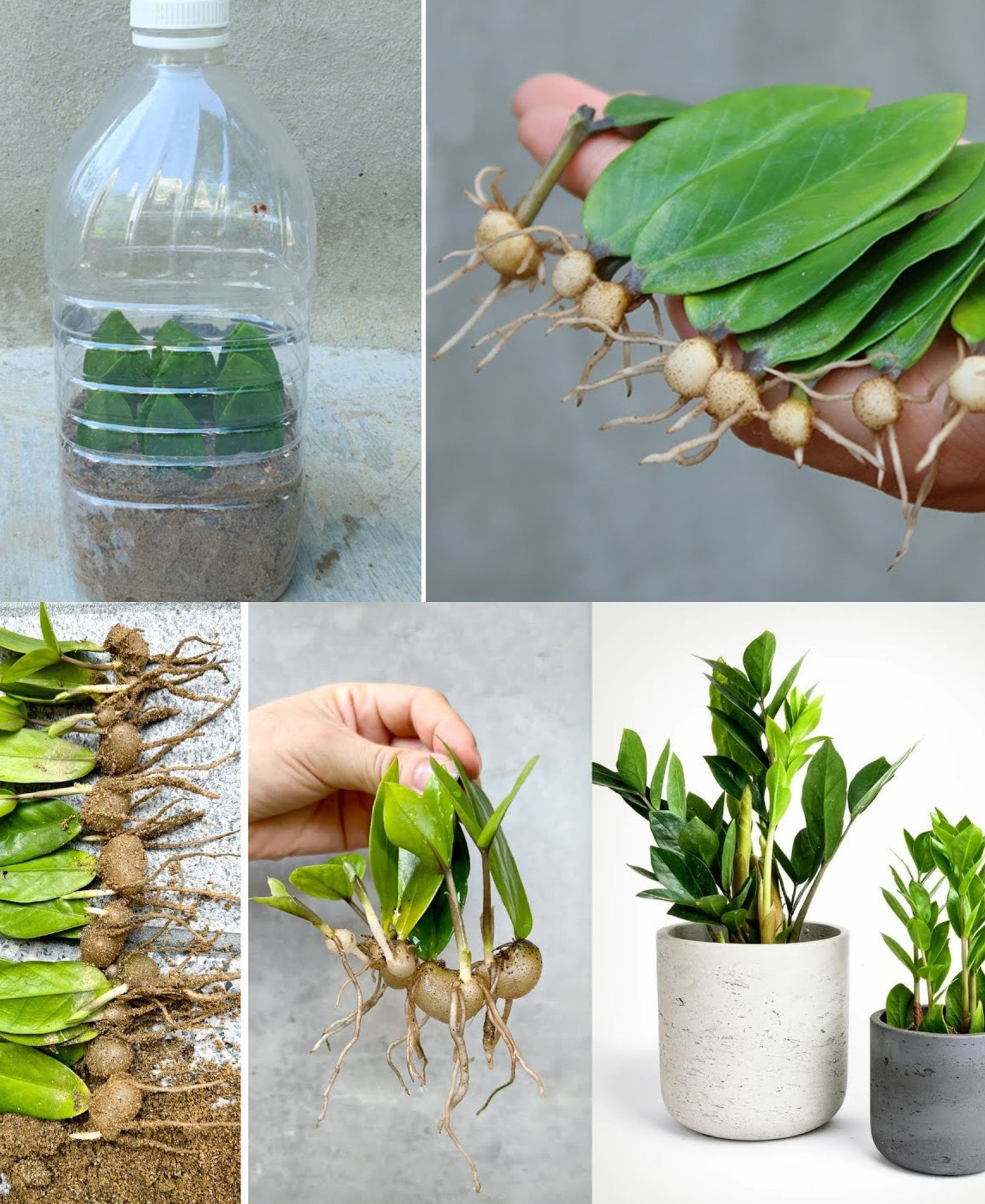
How to propagate leaves in sand to produce many roots at home🌱
Propagating leaves in sand is a common method for creating new plants from certain types of plants that can reproduce through leaf cuttings. Here’s a step-by-step guide on how to propagate leaves in sand to produce roots at home:
Materials Needed:
- Healthy plant leaves (suitable for propagation)
- Clean, coarse sand
- Small pots or containers
- A spray bottle or mister
- Rooting hormone (optional)
- Plastic wrap or a plastic dome (optional)
Steps:
- Select Suitable Leaves:
- Choose healthy, mature leaves from the parent plant. Make sure the leaves are free from pests and diseases.
- Prepare the Sand:
- Use clean, coarse sand as a propagation medium. You can also use a mix of sand and perlite or vermiculite for added aeration.
- Cut the Leaves:
- With clean scissors or a sharp knife, carefully cut the leaves from the parent plant. Make sure each cutting includes a portion of the leaf blade and the leaf petiole (stalk).
- Remove Excess Tissue:
- Trim the leaf, if necessary, to remove excess tissue. For some plants, you may want to cut the large leaves into smaller sections with a portion of the petiole attached.
- Dip in Rooting Hormone (Optional):
- If desired, you can dip the cut end of the leaf or the petiole in rooting hormone. Rooting hormone can stimulate the formation of roots.
- Insert into Sand:
- Insert the cut end or the base of the leaf into the sand, burying it by about an inch. Ensure that the leaf stays upright and is firmly anchored in the sand.
- Mist the Sand:
- Lightly mist the sand to provide moisture without causing waterlogging. The sand should be consistently moist but not overly wet.
- Create a Humid Environment (Optional):
- Cover the container with plastic wrap or place the entire setup in a plastic dome to create a humid environment. This helps prevent excessive moisture loss from the leaves.
- Place in Indirect Light:
- Put the container in a location with bright, indirect light. Avoid placing it in direct sunlight, as this can lead to excessive drying of the leaves.
- Monitor and Mist:
- Regularly check the moisture level in the sand. Mist the leaves if the environment becomes too dry.
- Root Development:
- Over time, roots will start to develop from the base of the leaf or the petiole. This process can take several weeks to a few months, depending on the plant species.
- Transplanting:
- Once the roots are well-developed and have reached a sufficient length, carefully transplant the rooted leaves into individual pots with potting mix.
- Acclimate to Regular Conditions:
- Gradually acclimate the new plants to regular growing conditions by exposing them to longer periods of light and reducing humidity.
Tips for Success:
- Select Plants Suitable for Leaf Cuttings: Not all plants can be propagated from leaves. This method is often successful with plants like African violets, succulents, and some herbaceous perennials.
- Maintain Consistent Moisture: Keep the sand consistently moist but not waterlogged. Mist the leaves regularly to maintain a humid environment.
Propagation success can vary based on the type of plant you’re working with, so it’s essential to research the specific requirements of the plant you’re trying to propagate. Some plants may require specific conditions, while others may be more forgiving. Additionally, be patient, as rooting and new growth may take some time to occur.
